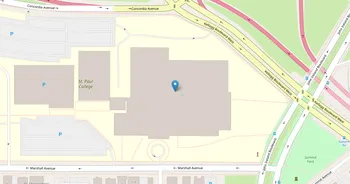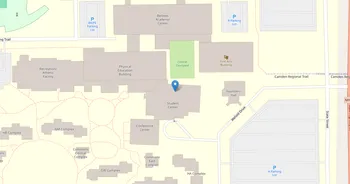Rasmussen University, Minnesota : Overview, Courses, Scholarships & Rankings
About Rasmussen University
Set near the Mississippi River in St. Cloud, Rasmussen University's Minnesota campus has a practical, career-centered feel. It's known for focused study in healthcare, business, and technology, with instructors who bring workplace know-how to class. Students find labs, a learning commons, tutoring, and one-on-one advising that follows them from the start to graduation. The atmosphere is calm, purposeful, and friendly.
Student life leans collaborative. Expect study groups, skills workshops, and low-key service projects, plus quick access to parks, trails, coffee spots, and local arts. Career preparation is front and center with resume help, mock interviews, and employer meetups. The campus has a reputation for flexible paths that fit working adults and first-time college students, and for community ties that make internships and nearby job leads feel close at hand.
Key Institutional Details
Contact & Profile
Academic & Institutional
Academic Programs & Fields of Study
Rasmussen University, Minnesota offers 37 degree programs across 8 major academic fields, graduating approximately 3,030 students annually. The most popular fields by graduate volume are Health (16 programs, 1,376 graduates), Business (10 programs, 768 graduates), Education (2 programs, 645 graduates), Computer & IT (5 programs, 66 graduates) and Law (1 programs, 64 graduates). Explore program details, award levels, and graduate demographics below.
Health (16 programs, 1,376 graduates)
Healthcare Professions, Medical Sciences and Clinical Practice
| Program Name | Graduates | Gender Distribution | Award Levels | CIP Code |
|---|---|---|---|---|
| Registered Nursing | 452 |
|
Associate's
Bachelor's
Master's
Other Award
|
51.3801 |
| Medical Insurance Coding | 435 |
|
Other Award
|
51.0713 |
| Licensed Practical Nursing | 103 |
|
Certificate (1-2 yrs)
|
51.3901 |
| Pharmacy Technician | 85 |
|
Other Award
|
51.0805 |
| Health Administration and Management | 80 |
|
Bachelor's
Master's
|
51.0701 |
| Medical Administrative Assistant | 56 |
|
Other Award
|
51.0716 |
| Medical Assistant | 46 |
|
Certificate (1-2 yrs)
|
51.0801 |
| Health Information Technology | 33 |
|
Associate's
|
51.0707 |
| Public Health | 21 |
|
Master's
|
51.2201 |
| Surgical Technology | 19 |
|
Associate's
|
51.0909 |
| Radiologic Technology | 16 |
|
Associate's
|
51.0911 |
| Physical Therapy Assistant | 10 |
|
Associate's
|
51.0806 |
| Clinical Laboratory Technician | 8 |
|
Associate's
|
51.1004 |
| Nursing Practice | 8 |
|
Doctorate (P)
|
51.3818 |
| Health Information Administration | 2 |
|
Bachelor's
|
51.0706 |
| Community Health and Preventive Medicine | 2 |
|
Bachelor's
|
51.2208 |
Business (10 programs, 768 graduates)
Business Administration, Marketing and Entrepreneurship
| Program Name | Graduates | Gender Distribution | Award Levels | CIP Code |
|---|---|---|---|---|
| Executive Assistant and Secretary | 284 |
|
Other Award
|
52.0402 |
| Business Administration and Management | 219 |
|
Associate's
Bachelor's
Master's
|
52.0201 |
| Accounting and Bookkeeping Technology | 125 |
|
Associate's
Other Award
|
52.0302 |
| Human Resources Management | 80 |
|
Associate's
Bachelor's
Master's
|
52.1001 |
| Management Information Systems | 23 |
|
Associate's
|
52.1201 |
| Marketing Management | 22 |
|
Associate's
Bachelor's
|
52.1401 |
| Accounting | 9 |
|
Bachelor's
|
52.0301 |
| Logistics and Supply Chain Management | 4 |
|
Bachelor's
|
52.0203 |
| Finance, General | 1 |
|
Bachelor's
|
52.0801 |
| Management Science | 1 |
|
Master's
|
52.1301 |
Education (2 programs, 645 graduates)
Educational Sciences, Teaching Methods and Pedagogy
| Program Name | Graduates | Gender Distribution | Award Levels | CIP Code |
|---|---|---|---|---|
| Early Childhood Education | 621 |
|
Certificate (1-2 yrs)
Associate's
Other Award
|
13.1210 |
| Educational Leadership and Administration | 24 |
|
Bachelor's
|
13.0401 |
Computer & IT (5 programs, 66 graduates)
Computer Science, Information Technology and Cybersecurity
| Program Name | Graduates | Gender Distribution | Award Levels | CIP Code |
|---|---|---|---|---|
| Network and System Administration | 44 |
|
Associate's
Other Award
|
11.1001 |
| Computer Support Specialist | 10 |
|
Other Award
|
11.1006 |
| Information Systems Security and Auditing | 8 |
|
Bachelor's
Other Award
|
11.1003 |
| Information Science | 3 |
|
Bachelor's
|
11.0401 |
| Computer Science | 1 |
|
Bachelor's
|
11.0701 |
Law (1 programs, 64 graduates)
Legal Studies, Jurisprudence and Professional Law Practice
| Program Name | Graduates | Gender Distribution | Award Levels | CIP Code |
|---|---|---|---|---|
| Legal Assistant and Paralegal | 64 |
|
Associate's
Other Award
|
22.0302 |
Security & Safety (1 programs, 63 graduates)
Emergency Management, Law Enforcement and Public Safety
| Program Name | Graduates | Gender Distribution | Award Levels | CIP Code |
|---|---|---|---|---|
| Criminal Justice and Police Science | 63 |
|
Associate's
Bachelor's
|
43.0107 |
Arts (1 programs, 32 graduates)
Fine Arts, Design Studies and Creative Performance
| Program Name | Graduates | Gender Distribution | Award Levels | CIP Code |
|---|---|---|---|---|
| Graphic Design | 32 |
|
Associate's
Bachelor's
|
50.0409 |
Engineering (1 programs, 16 graduates)
Engineering Sciences and Applied Technology Solutions
| Program Name | Graduates | Gender Distribution | Award Levels | CIP Code |
|---|---|---|---|---|
| Software Engineering | 16 |
|
Associate's
|
14.0903 |
Tuition, Fees & Estimated Costs
Overview of tuition rates, housing, and other annual education expenses for undergraduate and graduate students
Financial Aid & Student Support
Summary of scholarships, grants, student loans, and financial aid statistics for undergraduate students
Student Success Metrics
Graduation rates and post-graduation earnings to help assess student outcomes and long-term value of education.
Loan Burden & Repayment Outcomes
Breakdown of loan repayment rates and student debt levels by income and dependency status.
Frequently Asked Questions
Find answers to the most common questions about Rasmussen University, Minnesota
How much does it cost to attend Rasmussen University, Minnesota?
The annual tuition at Rasmussen University, Minnesota is $11,750 for in-state students. When including room and board, books, and other expenses, the total estimated cost is approximately $11,821 for in-state students. Additional costs include room and board $9,936 (off-campus) and books and supplies $71.
Data based on IPEDS program completions for 2022-2023 academic year. Tuition and cost estimates are approximate and may not include all fees, personal expenses, or transportation costs.
What academic programs and degree levels does Rasmussen University, Minnesota offer?
Rasmussen University, Minnesota offers 37 academic programs across 8 major fields of study, with available degree levels: Certificate (1-2 yrs), Associate's, Bachelor's, Master's, Post-Master's, Doctorate (Professional), Other Award.
Most popular program areas include:
- Healthcare Professions, Medical Sciences and Clinical Practice (16 programs)
- Business Administration, Marketing and Entrepreneurship (10 programs)
- Educational Sciences, Teaching Methods and Pedagogy (2 programs)
- Computer Science, Information Technology and Cybersecurity (5 programs)
- Legal Studies, Jurisprudence and Professional Law Practice (1 programs)
Data based on IPEDS program completions for 2023-2024 academic year. Numbers reflect programs where students graduated, not all offered programs.
What financial aid and scholarships are available at Rasmussen University, Minnesota?
Rasmussen University, Minnesota provides financial aid to 3% of first-time, full-time students, with average grants of $7,742 and average loans of $9,770.
Average financial aid amounts by type:
- Pell grants: $6,226
- State/Local grants: $2,716
- Institutional grants: $1,540
- Federal loans: $8,078
The university supports 66 students with grants and 62 students with loans annually.
Data based on IPEDS for 2022-2023 academic year. Financial aid amounts and percentages may vary by program, enrollment status, and individual circumstances.
What is the average salary for Rasmussen University, Minnesota graduates?
Rasmussen University, Minnesota graduates earn a median salary of $41,436 after 6 years and $39,080 after 10 years.
The salary range 10 years after graduation spans from $21,835 (25th percentile) to $57,587 (75th percentile), with top earners reaching $58,200 (90th percentile).
Data based on IPEDS for 2022-2023 academic year. Salary data reflects graduates who received federal financial aid (approximately 60% of all graduates). Actual earnings may vary significantly based on program, location, and individual circumstances.
Related Universities




Found something useful? Help others discover it too! Share with friends, on social media, or save for later - every share helps someone find the information they need.